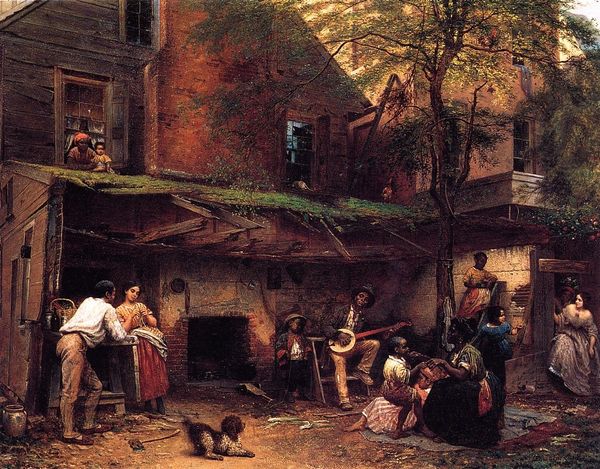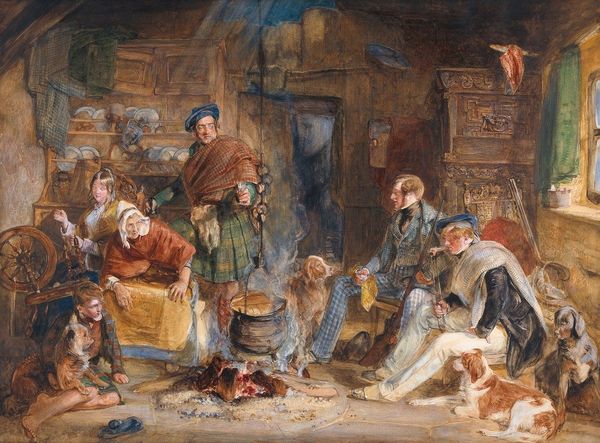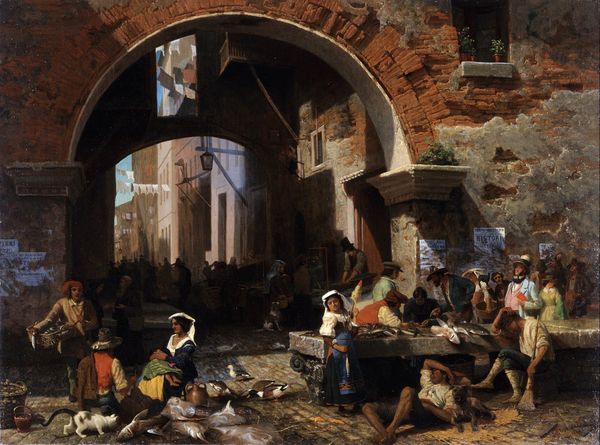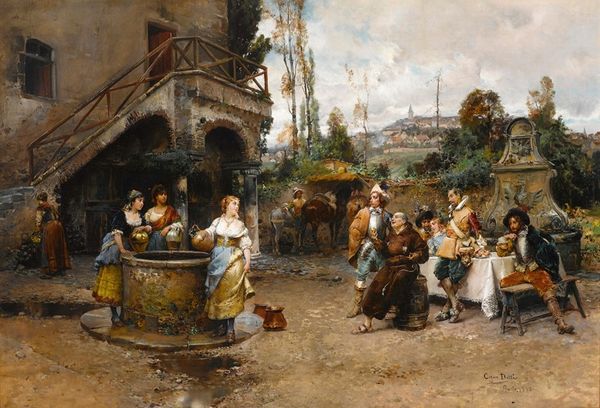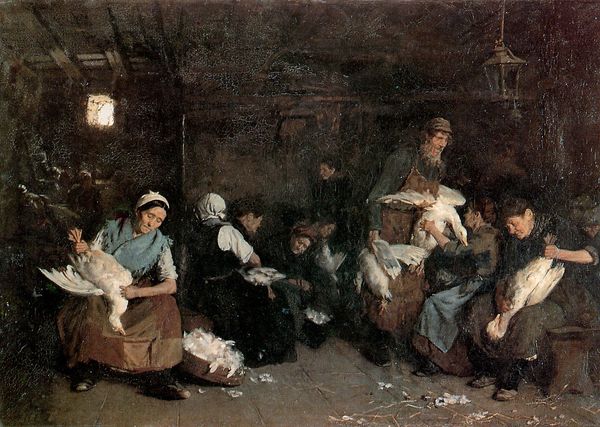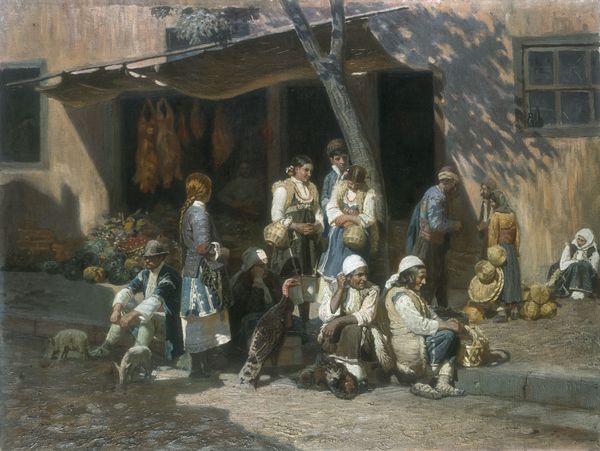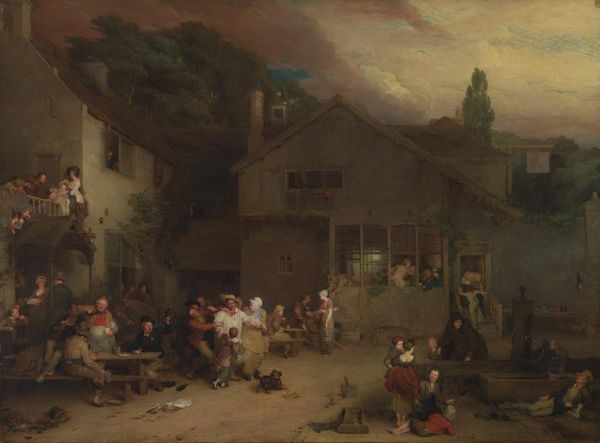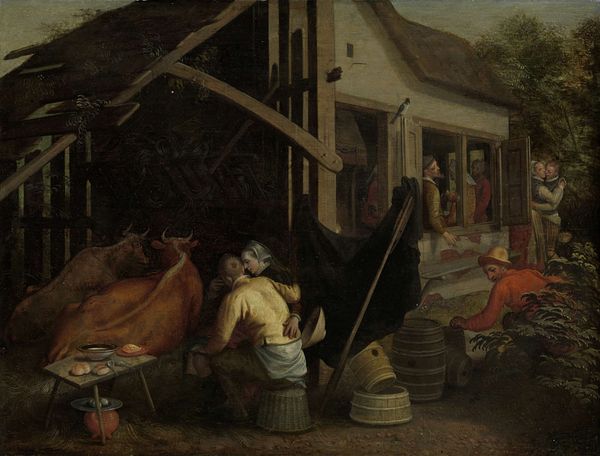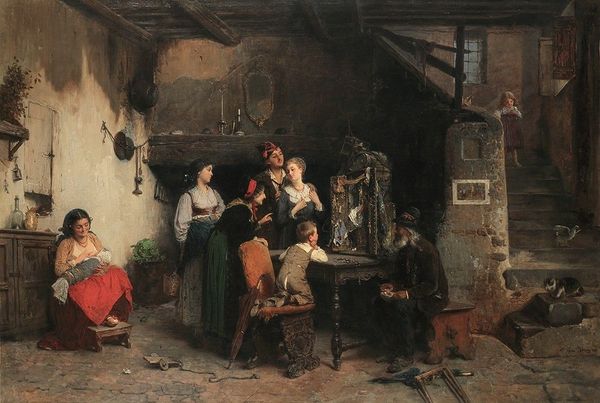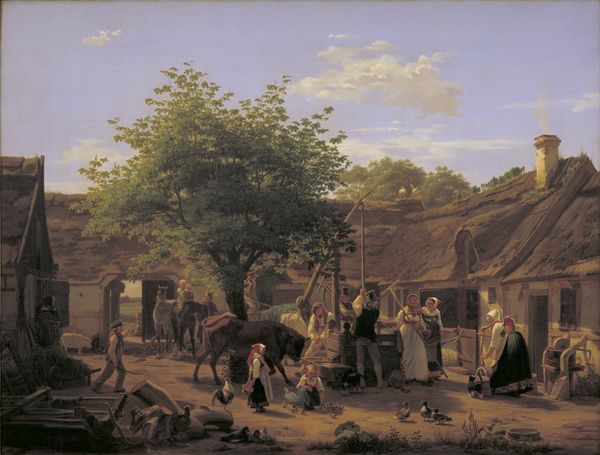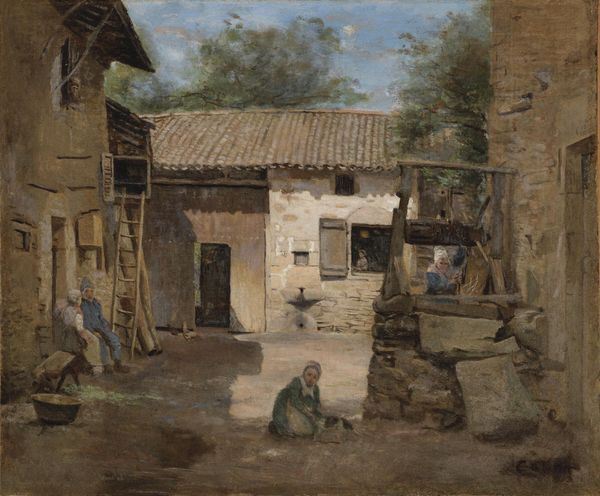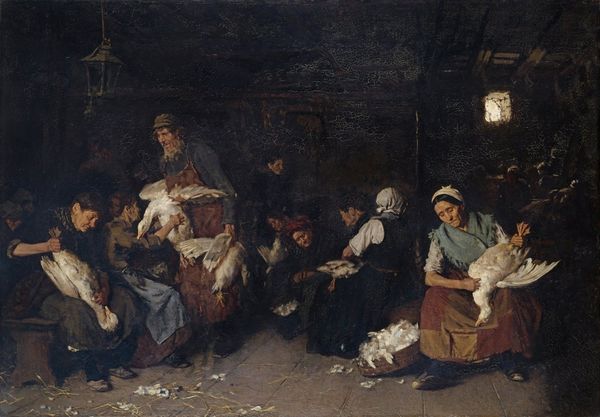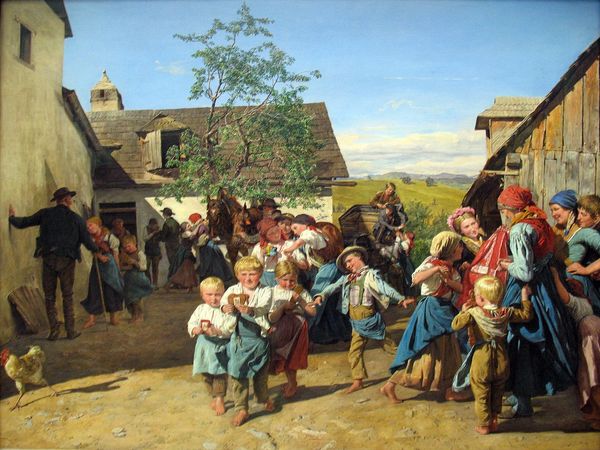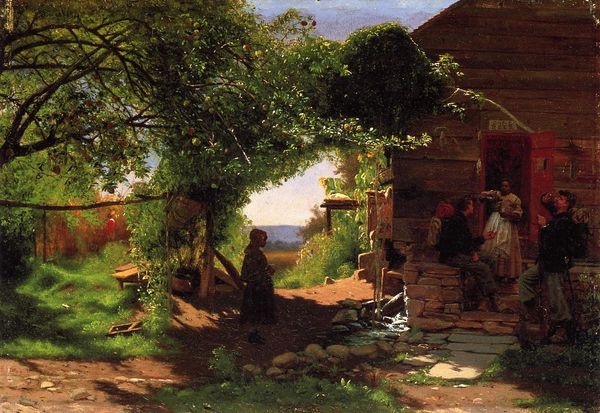
Copyright: Public domain
Curator: This painting is titled "Life in the South," completed in 1875 by Eastman Johnson. He used oil paint to capture this slice of... well, what's your first take on it? Editor: Honestly, it's a puzzle. There's this sense of ease, almost idyllic, but the dilapidated architecture suggests something else entirely. Makes you wonder about the full story behind that seemingly peaceful scene. Curator: The setting does a lot of talking, doesn't it? Consider the layers: Figures grouped closely together enjoying each other, while chickens wander above on the damaged rooftops and peering faces appear out of a far window... Editor: Exactly! That architecture acts as a cage, both literal and metaphorical, containing this vibrant community. Then you have that banjo. It's like a coded symbol – the joyful noise fighting against a backdrop of economic and social constraint. Banjo comes from enslaved peoples, for the context-aware listeners out there! Curator: I always thought it interesting how Johnson paints the figures, though. Almost as though there are a host of little details that makes everyone their own story! And the warm light makes everyone radiant as individuals. Do you read that too? Editor: Absolutely. Johnson clearly grapples with the duality. There's an attempt to romanticize, evident in the light and composition, but his realist's eye doesn't let him entirely off the hook. I can’t say I appreciate it. Is there really so much good in the times that existed? It seems kind of rose tinted, at the very least. Curator: Right? He’s looking for harmony but also not quite erasing the dissonance. Editor: Well said. And isn’t that always the tension of memory itself? Trying to reconcile the sweetness with the bitterness. It leaves me questioning not only the life depicted, but Johnson's own perspective on it all. Curator: What you say gets me wondering; the South is forever imprinted with different experiences, especially looking back in hindsight. Editor: Thanks. Sometimes it takes hearing different vantage points to re-immerse and truly begin to explore an artwork on a new, maybe transformative, level.
Comments
No comments
Be the first to comment and join the conversation on the ultimate creative platform.
